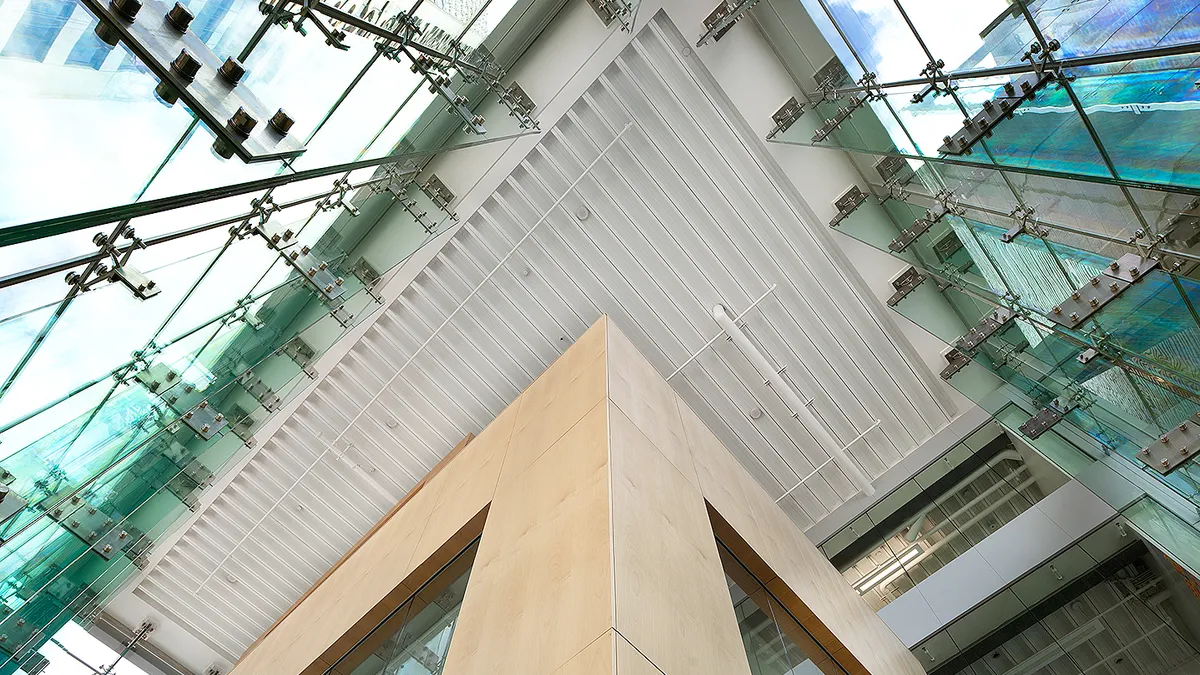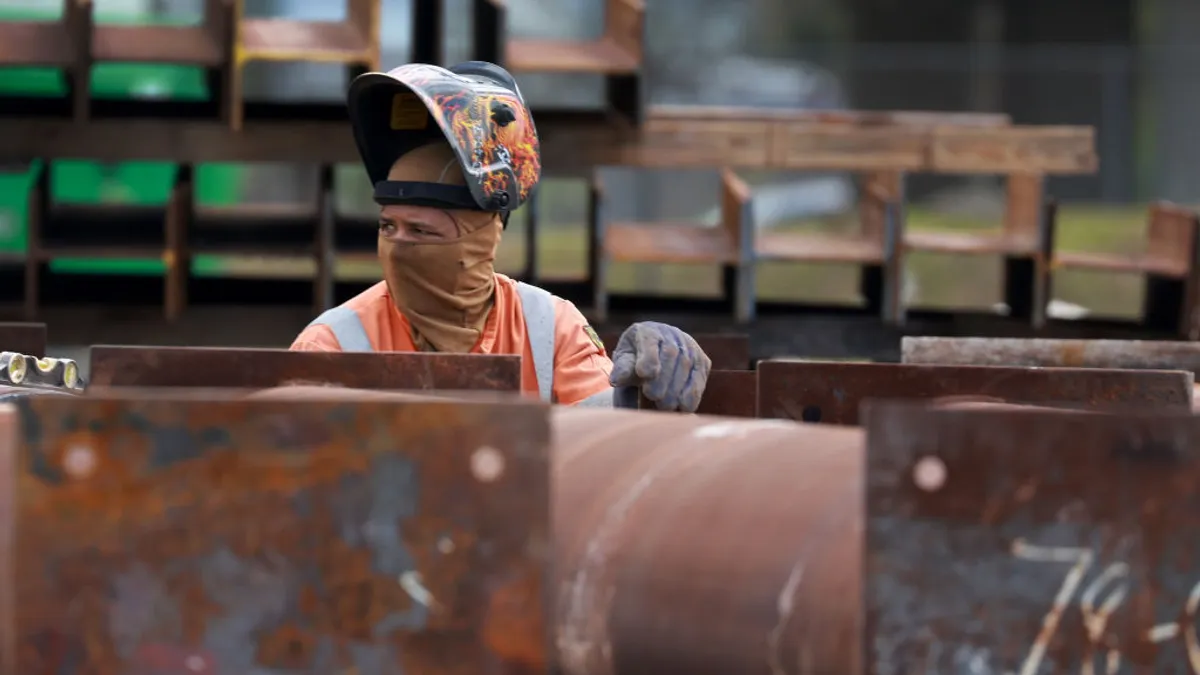Multi-story construction encompasses a vast and growing range of facility types and applications, from office buildings and retail complexes to hospitals, hotels and residential buildings. As this sector grows, so does the amount of structural building system options on the market.
Long-span composite floor systems, however, stand out thanks to an effective marriage of steel and concrete that offers design flexibility while meeting depth, span, aesthetic and performance standards. Composite joist and deck systems, deep-ribbed composite deck systems or dovetail composite deck systems meet the various needs of mid-rise and high-rise applications. All three floor systems blend the speed and versatility of steel with the performance and durability of concrete.
Choosing the right long-span composite system often starts with a review of clear span requirements, but the system selected also can be used to maximize floor-to-ceiling height while minimizing overall structural floor depth. Additional considerations include (UL) fire ratings, vibration and sound control (STC, IIC), streamlined erection and overall project cost efficiencies.
Composite joists create the longest spans possible
For projects requiring clear spans up to 60 feet, a composite joist system is ideal. To reach those spans, floor depth must increase. Composite joists use their depth to integrate mechanical, electrical, plumbing (MEP) and other utilities via their open-web design without adding to floor depth. The system can provide a 60-foot open-span with a total floor depth of around 38 inches.
The architectural vision for Cauley Ferrari in West Bloomfield, Mich., called for a second-floor showroom that needed to support 292,000 pounds of moveable live loads, span up to 50 feet and be built without temporary shoring.
Based on the 50-foot span requirement alone, a composite joist floor system was the answer. Specifically, 28-inch composite steel joists were used with 2-inch, 20-gauge, composite floor deck and a 3-inch concrete slab. Total floor depth was around 31 inches, thanks in part to the open-web joists that integrated MEP, which wouldn’t be possible with wide-flange steel or concrete beams.
Deep-ribbed composite makes steel frame solutions cost-effective
Deep-ribbed composite floor systems are most often used in projects requiring mid-range open spans up to 36 feet with a shallow structural depth. A project specifying 36-foot open spans, for example, results in a thin-slab floor depth of 13 inches.
A three-story, 80-foot interior open learning space at the University of Arizona takes advantage of its deep-ribbed composite floor system. Among the project’s requirements: visual appeal of exposed elements; sound, vibration and fire ratings; sufficient strength to support superimposed loads; 24.5-foot open spans; and no shoring during erection because of the interior’s 80-foot floor-to-floor height.
The resulting deep-ribbed composite deck slab floor features a 6-inch profile and a cellular acoustical underside with a noise reduction coefficient (NRC) of 1.00. The acoustical feature eliminated the added cost, complexity and installation of a suspended acoustical tile ceiling.
Dovetail composite achieves the thinnest total floor depths
Available in profiles as shallow as 2 inches, dovetail composite deck provides the shallowest floor depths possible while attaining clear or single spans up to 28 feet. It is ideal for minimizing story height while maximizing ceiling height: At 28 feet, for instance, 3.5-inch dovetail composite floor system can be as thin as 8 inches.
A recent 20-story hotel project required open or clear spans of 26 feet, one row of shoring, and acoustic and vibration testing. Composite joists were removed from consideration, leaving a 3.5-inch dovetail composite or 4.5-inch or 6-inch deep-ribbed composite as the options. The decision to use 3.5-inch dovetail composite came down to one distinguishing factor: While meeting other requirements, the dovetail composite floor also presented a significantly thinner overall structural floor depth.
For more information about the long-span composite floor systems in this article, visit www.newmill.com/longspan.
Learn more
Credit-hour course: Improving Multi-Story Building Design | .25 LU/HSW Credit
Course description: This short introductory course explains the three types of long-span composite floor systems that represent the trend in long-span, “thin slab” floor design.
Learning objective: Identify the three types of long-span composite floor systems and their distinguishing characteristics.










